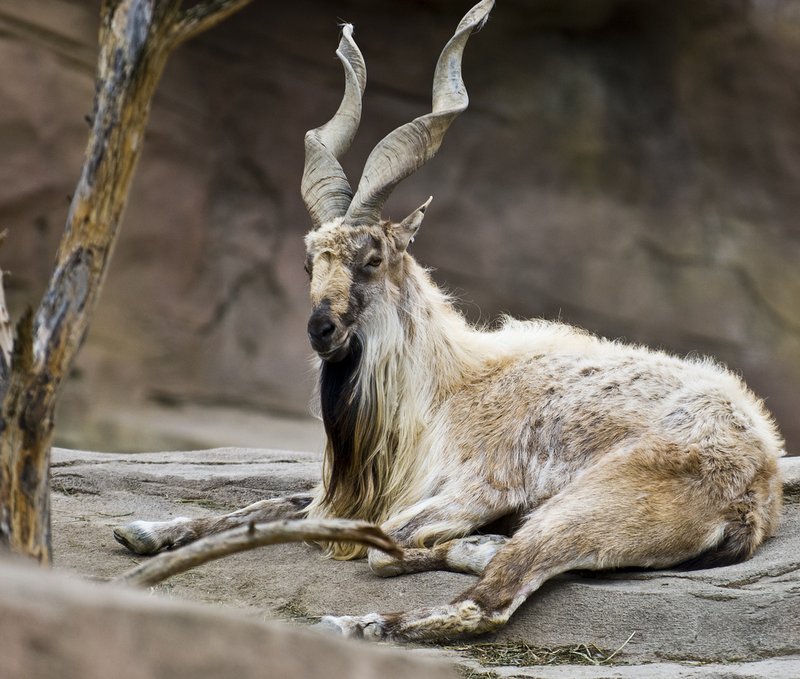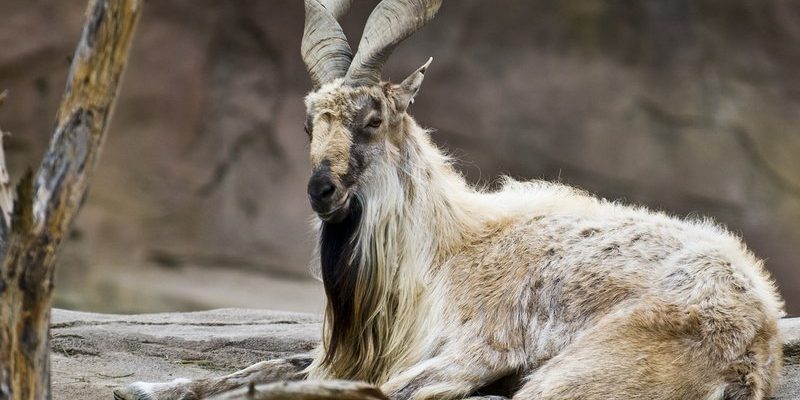
When you think of wild goats, you might picture a simple creature wandering through the hills. But let me introduce you to the Markhor, a fascinating animal that embodies the rugged beauty of mountainous terrains. With their impressive horns curving like a grand spiral staircase, Markhors are not just any goats—they’re a symbol of endurance and adaptability.
These remarkable animals are native to the mountainous regions of Central Asia, particularly found in countries like Pakistan, Afghanistan, and Tajikistan. Imagine a place where the air is crisp and the rugged beauty of nature is on full display; that’s the Markhor’s home sweet home. They thrive in harsh environments, showcasing an incredible ability to navigate steep cliffs and rocky landscapes.
In our exploration of the Markhor, we’ll uncover its unique characteristics, habitat, behaviors, and the conservation efforts in place to protect this majestic species. So, grab a cup of coffee and let’s dive deep into the world of the Markhor!
Physical Characteristics
One of the first things you’ll notice about the Markhor is its impressive horns. These can reach lengths of about 5 feet in males, twisted elegantly like a corkscrew. The horns are not just for show; they play a vital role in mating displays and competitions among males. Their fur is thick and coarse, providing insulation against the cold, and it varies from tawny to dark brown.
Markhors are medium to large-sized goats, typically weighing between 100 to 250 pounds. Males are generally larger than females, with a distinct beard that adds to their rugged appearance. Their legs are strong and well-adapted for climbing, allowing them to leap across rocky outcrops with ease. It’s almost like watching a gymnast perform their routines—graceful yet powerful.
Another striking feature is their eyes. The Markhor has large, expressive eyes that seem to survey their surroundings keenly. This keen eyesight is crucial for spotting predators and navigating their challenging habitat. As they move through their environment, they blend seamlessly into the landscape, thanks to their natural camouflage.
Habitat and Range
The Markhor primarily inhabits the steep, rugged mountains of Central Asia. They prefer areas with plenty of scrub vegetation and open grassy slopes, which provide food and shelter. These habitats typically range from 3,300 to 12,000 feet in elevation, showcasing their adaptability to high altitudes.
In Pakistan, the Markhor can be found in the northern regions, particularly in the mountainous areas such as the Hindu Kush and the Karakoram ranges. These locations offer a mix of habitats, from rocky cliffs to alpine meadows, which are all essential for their survival. They’ve carved out a niche in these demanding environments, where few other animals can thrive.
Interestingly, their range has been affected by human activities and habitat loss. Deforestation and agriculture have encroached on their natural habitats. Yet, with conservation measures in place, some areas have seen a rebound in Markhor populations, highlighting the resilience of this species.
Diet and Feeding Habits
Markhors are herbivores, which means their diet mainly consists of plants. They enjoy a variety of vegetation, including grasses, shrubs, and leaves. Living in mountainous regions, their diet is adapted to the available flora, allowing them to feast on whatever is abundantly available during different seasons.
You might be wondering how they manage to forage on such steep cliffs. Well, Markhors are equipped with strong hooves that help them grip rocky surfaces while they nibble on tasty bits of greenery. They are also known to be quite selective eaters, often choosing the most nutritious plants available. This selectivity ensures they maintain their health and energy levels for climbing and foraging.
Markhors exhibit fascinating feeding behaviors, often seen grazing in small groups. They have a social structure that encourages cooperation during feeding times, allowing them to keep an eye out for potential predators. Imagine a group of friends sharing a meal while keeping an eye on the world around them—this is how Markhors interact while feeding!
Behavior and Social Structure
Markhors are generally social animals, forming groups that can range from a few individuals to larger herds. These herds typically consist of females and their young, while males tend to be more solitary or form small bachelor groups. This social structure is vital for their survival, offering protection from predators.
During the mating season, which occurs in late winter to early spring, males will compete with each other to attract females. These competitions can be quite spectacular, as males engage in head-butting contests, using their magnificent horns to establish dominance. The winner earns the right to mate with the females in the area, showcasing nature’s way of ensuring the strongest genes are passed on.
When it comes to their daily activities, Markhors are crepuscular, meaning they are most active during the early morning and late afternoon. This behavior helps them avoid the harsh midday heat and makes it easier to find food. It also allows them to stay vigilant against predators like leopards and wolves.
Conservation Status
The Markhor is classified as Near Threatened on the IUCN Red List, which means they face various threats that could lead to a decline in their population. Habitat loss due to agriculture, deforestation, and overhunting have significantly impacted their numbers in the wild. However, thanks to dedicated conservation efforts, there has been some success in stabilizing Markhor populations.
Several organizations are working on initiatives to protect the Markhor’s habitat and promote sustainable practices among local communities. This includes establishing protected areas and encouraging eco-tourism, which allows locals to benefit economically from preserving the Markhor rather than exploiting them. It’s like a win-win scenario where everyone can thrive!
Moreover, hunting programs in some regions are tightly regulated, allowing for limited and sustainable hunting that aids conservation efforts. This has been a controversial but effective approach, as it has provided funds for habitat conservation while keeping populations in check. By involving local communities in conservation, we’re ensuring a brighter future for the Markhor.
Interesting Facts about the Markhor
| Scientific Name: | Capra falconeri |
| Weight: | 100-250 pounds |
| Height: | 2.5-3.5 feet at the shoulder |
| Diet: | Herbivores (grasses, shrubs) |
| Habitat: | Mountainous regions of Central Asia |
| Lifespan: | 10-14 years in the wild |
| Population: | Approximately 2,500-3,000 individuals |
Human Interaction and Cultural Significance
The Markhor has long held a special place in the cultures of the regions it inhabits. In Pakistan, for example, it is recognized as the national animal, symbolizing strength and resilience. This connection to the Markhor has spurred local pride and a sense of responsibility for its conservation.
Local communities often share folklore and stories that feature the Markhor, which helps to foster a cultural appreciation for this stunning animal. This cultural significance can be a powerful tool for conservation, as it encourages locals to protect their natural heritage.
Additionally, the Markhor has also found its place in eco-tourism, attracting visitors who wish to witness these magnificent creatures in their natural habitat. By promoting eco-friendly tours, locals can benefit economically, creating a vested interest in preserving the Markhor’s environment. It’s a beautiful example of how conservation can go hand in hand with cultural appreciation.
FAQ
What is the difference between the Markhor and other goats?
The Markhor stands out among other goat species primarily due to its impressive horns, which can grow up to five feet in length and spiral elegantly. While many goats have standard, shorter horns, the Markhor’s horns are a distinctive trait that sets them apart. Additionally, Markhors are typically larger and more robust than common domestic goats.
Are Markhors endangered?
The Markhor is classified as Near Threatened, which means they are at risk due to habitat loss and hunting pressures. Conservation efforts have been implemented to help stabilize their populations, but ongoing efforts are essential to ensure their survival in the wild.
How do Markhors adapt to their mountainous habitat?
Markhors are highly adapted to their rocky, mountainous environments. Their strong legs and specialized hooves allow them to maneuver steep cliffs with grace. Their thick coats provide insulation against cold temperatures, making them well-suited for life at high altitudes.
What do Markhors eat in the wild?
Markhors are herbivores, primarily feeding on grasses, shrubs, and leaves. They have a selective diet, preferring nutritious plants that sustain their energy levels. Their foraging habits often involve climbing steep terrains to access a variety of vegetation.
How long do Markhors live?
In the wild, Markhors generally live between 10 to 14 years. Factors such as predation, habitat conditions, and access to food can significantly influence their lifespan. In protected environments, they may live longer due to the absence of threats.
What threats do Markhors face today?
Markhors face several threats, including habitat loss due to deforestation and agricultural expansion, as well as overhunting. These factors have led to a declining population in certain areas. Conservation programs are crucial in mitigating these threats and ensuring the Markhor’s survival.
Can you see Markhors in zoos or wildlife reserves?
Yes, some zoos and wildlife reserves house Markhors as part of their conservation and education programs. These facilities help raise awareness about the species and the challenges they face in the wild, contributing to global conservation efforts.
How can I help with Markhor conservation?
You can support Markhor conservation by choosing eco-friendly travel options, donating to conservation organizations, or spreading awareness about their plight. Additionally, advocating for sustainable practices in agriculture and forestry can also make a significant difference in preserving their natural habitats.
What is the social structure of Markhor herds?
Markhor herds typically consist of females and their young, while adult males are more solitary or form small bachelor groups. This social structure helps protect against predators, as they can work together to keep lookout for danger while feeding.
How do Markhor communicate with each other?
Markhors use various vocalizations and body language to communicate. From soft bleats to assertive postures, they convey messages about territory, mating readiness, and warnings about potential threats.
Are Markhors resistant to cold weather?
Yes, Markhors have thick, insulated coats that help them withstand cold temperatures typical of their mountainous habitats. Their adaptation to cold weather is one of the reasons they thrive in high-altitude environments.

